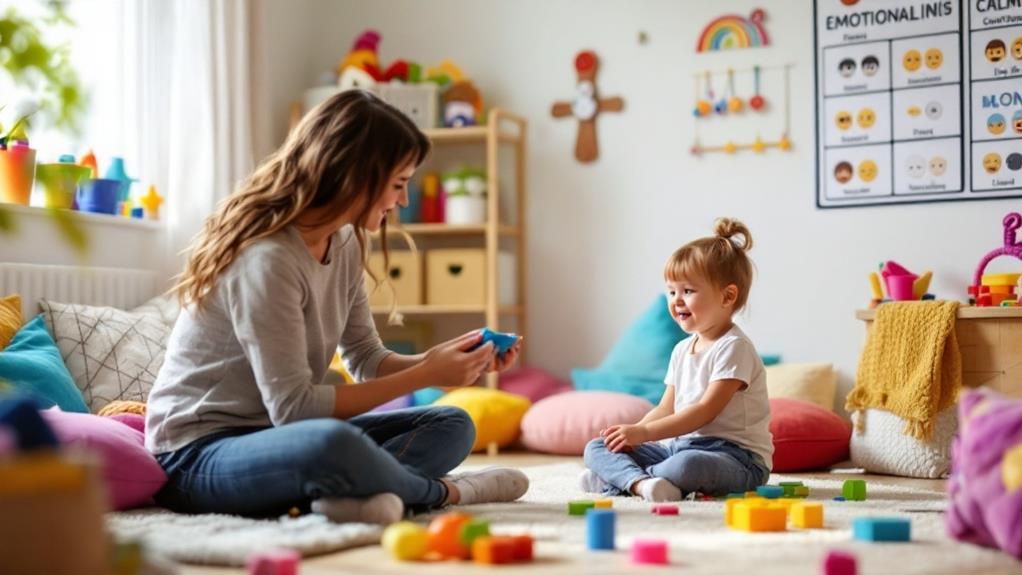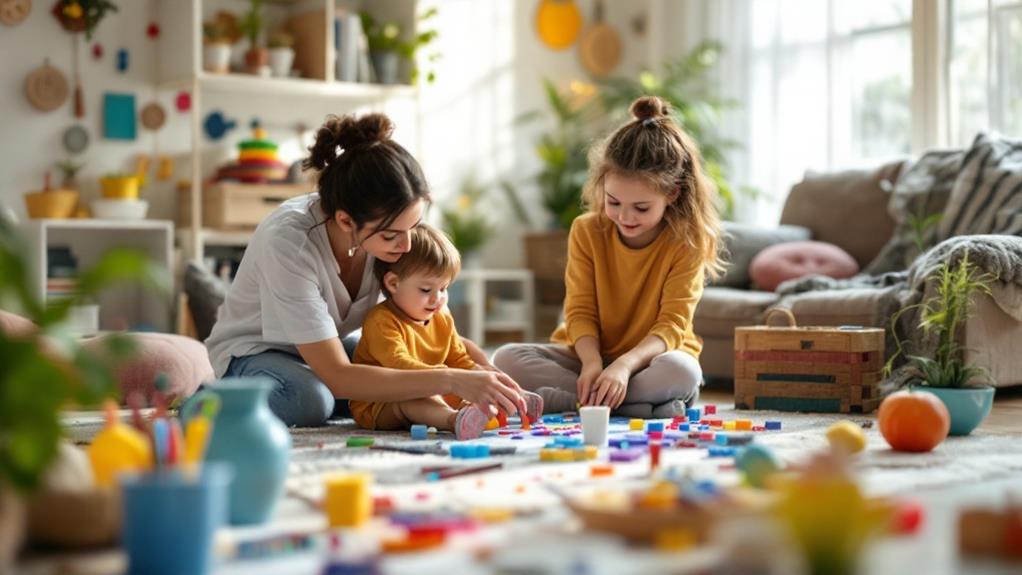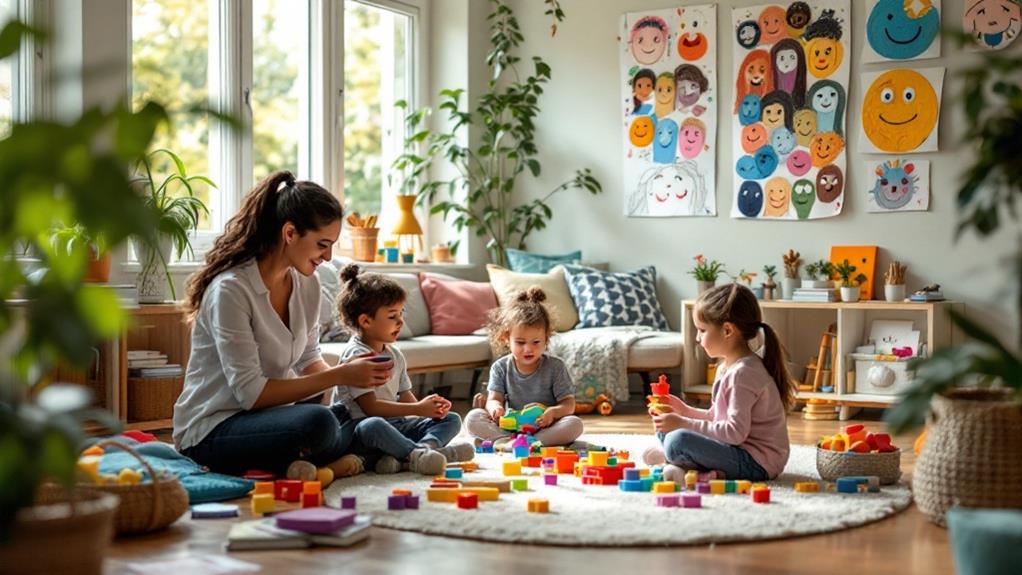At therapy centers like Axis, you'll find a welcoming environment where children can develop emotional regulation skills through the combined powers of ABA and OT. ABA focuses on behavior modification, using positive reinforcement to help kids break down emotional tasks into manageable steps. Meanwhile, OT enhances their daily living skills, utilizing play to strengthen emotional control and social interactions. Together, these therapies foster an understanding of each child's unique challenges, building resilience and confidence. With tailored support, children learn to express themselves and manage their emotions better, paving the way for lasting success. Discover how transformative this journey can be.
Key Takeaways
- Therapy centers like Axis utilize ABA to modify behaviors and enhance emotional management through positive reinforcement techniques.
- Occupational Therapy at Axis focuses on developing fine motor skills and sensory processing, crucial for emotional control in everyday tasks.
- Integrated approaches combine ABA and OT, providing tailored interventions that address children's unique emotional regulation challenges.
- Structured environments in therapy promote practice of emotional regulation skills, fostering resilience and adaptability in various social situations.
- Success stories from Axis illustrate the profound impact of compassionate guidance and collaborative support on children's emotional growth and self-esteem.
Importance of Emotional Regulation

Emotional regulation isn't just a buzzword—it's an essential skill that can shape your child's well-being and future. When kids learn to manage their emotions, they can navigate life's ups and downs more effectively.
You might notice that children who can identify and express their feelings tend to have better relationships with peers and adults. They're less likely to act out, helping to create a more harmonious environment both at home and in school.
By focusing on emotional regulation, you're equipping your child with tools to cope with stress and challenges. Imagine your child feeling overwhelmed and instead of resorting to tantrums or withdrawal, they take a deep breath and articulate what they need.
This shift doesn't just benefit them—it fosters a sense of empathy and understanding in others, too.
Moreover, developing these skills lays the groundwork for academic success. Children who can self-regulate are more engaged, attentive, and ready to learn.
Overview of ABA Therapy
Applied Behavior Analysis (ABA) therapy is a powerful tool designed to help children develop essential skills, including emotional regulation. This evidence-based approach focuses on understanding and modifying behavior through positive reinforcement, making it easier for children to learn how to manage their emotions and actions effectively.
In ABA therapy, you'll see therapists working closely with children to break down complex tasks into manageable steps. This process not only enhances emotional understanding but also builds confidence. By celebrating small achievements, you encourage children to engage and take ownership of their learning.
During sessions, therapists often create structured environments that allow children to practice emotional regulation skills in real-life scenarios. This hands-on approach helps them recognize triggers and develop coping strategies, making it easier to navigate challenging situations.
ABA therapy isn't a one-size-fits-all solution; it's tailored to meet each child's unique needs. By fostering open communication between therapists, parents, and children, you create a supportive network that promotes growth and understanding.
With patience and commitment, you can help children thrive emotionally and behaviorally, equipping them with tools that last a lifetime.
Overview of Occupational Therapy

Building on the skills learned in ABA therapy, occupational therapy plays an essential role in helping children develop the necessary tools to engage in daily activities.
It's all about enhancing their ability to navigate everyday tasks, from dressing themselves to interacting with peers. You'll find that occupational therapists focus on building fine motor skills, sensory processing, and social interactions, all of which are fundamental for emotional regulation and overall functioning.
As you support a child in occupational therapy, you'll witness the power of play in learning. Engaging in fun, meaningful activities helps children practice emotional control and adapt to challenging situations.
For instance, through games, they can learn to share, take turns, and express their feelings in a safe environment.
You'll also notice how tailored strategies can empower each child to overcome specific barriers they face. By fostering independence and self-esteem, occupational therapy not only addresses the child's immediate needs but also lays the groundwork for future success in various settings.
Your role in this journey is invaluable, as you help children cultivate skills that will serve them throughout their lives.
Integrating ABA and OT
Integrating ABA and OT can create a powerful synergy in supporting children's development. By combining Applied Behavior Analysis (ABA) and Occupational Therapy (OT), you're equipping children with a holistic approach to managing their emotions and behaviors. ABA focuses on understanding and modifying behavior, while OT emphasizes enhancing daily living skills and sensory processing. This integration allows you to address both the emotional and practical needs of a child.
When you merge these therapies, you can tailor interventions that aren't only effective but also engaging. For instance, while ABA helps in establishing routines that reinforce positive behaviors, OT can introduce sensory activities that promote self-regulation. This dual approach cultivates an environment where children feel understood and supported.
Moreover, integrating ABA and OT encourages collaboration among therapists, parents, and educators, creating a consistent support network. This teamwork fosters a deeper understanding of a child's unique challenges and strengths, making it easier to celebrate their progress.
Real-Life Success Stories

In the journey of emotional growth, real-life success stories can serve as powerful reminders of the progress children can achieve.
Take Sarah, for instance. When she first started therapy, her outbursts were frequent and unpredictable. Through the combined efforts of ABA and OT, Sarah learned to identify her emotions and use coping strategies. Now, she expresses her feelings in words instead of tantrums, and her parents see a noticeable change in her behavior.
Then there's Jake, who struggled with anxiety in social situations. With support from dedicated therapists, he practiced role-playing scenarios and learned to manage his feelings. Today, Jake enthusiastically participates in group activities at school, building friendships that once felt out of reach.
These stories highlight the incredible resilience of children when given the right tools and support. They remind us that every small step forward is a victory worth celebrating.
As you engage with children facing similar challenges, remember that progress may look different for everyone. Each success story, no matter how small, is a demonstration of the power of emotional regulation and the impact of compassionate guidance.
You're helping shape their futures one moment at a time.
Building Supportive Environments
Creating supportive environments is key to nurturing emotional regulation in children. When you foster a space that encourages expression and understanding, you empower kids to explore their feelings safely.
Think about how your words and actions can help create a climate of trust. Your validation can make a world of difference.
Encourage open communication, letting children know it's okay to share their emotions without fear of judgment. Use calming visuals and sensory-friendly tools to create a soothing atmosphere where they can feel at ease.
Consistency is crucial; establishing routines helps provide a sense of stability that children need to manage their emotions effectively.
Collaboration is also essential. Work closely with therapists and caregivers to guarantee everyone is on the same page.
This unified approach reinforces the skills children learn in therapy, enabling them to practice emotional regulation across different settings.
Conclusion
In the journey of helping children master emotional regulation, therapy centers like Axis play a pivotal role. By blending ABA and OT techniques, kids can conquer challenges and cultivate coping skills. Remember, every small step leads to significant strides in self-awareness and self-control. With supportive environments and understanding approaches, you're not just guiding them; you're building bridges to brighter futures. Together, let's foster feelings of confidence and connection, turning trials into triumphs.
